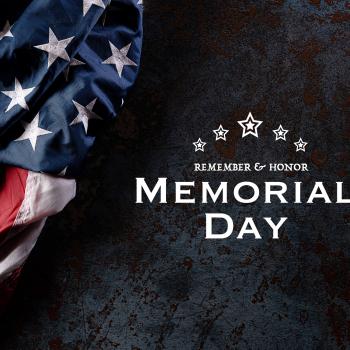
Observed on the last Monday of May, Memorial Day honors the men and women who died while serving in the United States military. In addition to having celebrations with family and friends, many people visit cemeteries and memorials and place flags on the grave sites of fallen servicemen and women.
Have students visit the Stories from the Veterans History Project site. Once there, ask students to choose one of the featured interviews to listen to, peruse the previous releases, or look at a list of collections to find more interviews that may be of interest to them. Students select an interview that interests them and take notes while listening to remember important facts and details about the veteran’s life. After listening to the interview, students complete one of the projects below to honor the veteran they researched:
- Create a timeline of the veteran’s life or time in the military.
- Using the story of the veteran’s life, create a picture book for younger children that tells the story of the veteran’s life or of the war in which he/she fought.
- Record the important facts and information from the veteran’s life using the Hero’s Journey interactive.
- Record a podcast that tells the veteran’s story.
This site includes a collection of personal accounts of American war veterans so that future generations may hear directly from veterans and better understand the realities of war.
Information on the history and traditions of observing Memorial Day in the United States is provided here.
This site includes a history of Memorial Day and tributes to soldiers; includes audio, video, and photos.

Today is the first day of the New Year on the Chinese lunar calendar. Each year of the calendar's 12-year cycle is represented by an animal. According to the Chinese zodiac, people born during a given year share traits with that animal. 2024 is the Year of the Dragon. Those born in the Year of the Dragon are known to be vigorous, ambitious, and honest.
Introduce students to the Chinese New Year by having them explore the Chinese zodiac. Begin the activity by having each student write five to eight adjectives or phrases that describe his or her personality traits. These should not be physical characteristics like hair color or height, but qualities such as "a good sense of humor," "honest," or "a risk-taker."
Then, have students look at the Chinese zodiac to find a description of the attibutes people would have if they were born in the same year they were. For younger students, try the Chinese Calendar, and for older students, try Chinese Horoscopes.
Once students have read their animal's attributes, have them explain how the animal does or does not seem to represent them. They should use specific examples from their own experiences to support what they say. For example, if the zodiac says that they have difficulty with authority, students should write about a time when they resisted (or did not resist) an authority figure.
Next, students can look through the other animal signs to see which one best represents them and write a persuasive piece describing why that sign fits them best.
This site offers information about the tradition and customs associated with Chinese New Year celebrations. Related links provide information on the Chinese zodiac and a Chinese New Year quiz.
This Farmer's Almanac resource offers printable posters, worksheets, puzzles, and cards to help students learn about the traditions of the Chinese New Year.
This quest resource provides kid-friendly information on the background and traditions of Chinese New Year. It includes information on activities leading up to and immediately following the New Year's Day.
This activity from National Geographic allows students to find their birth year animals and their related characteristics.
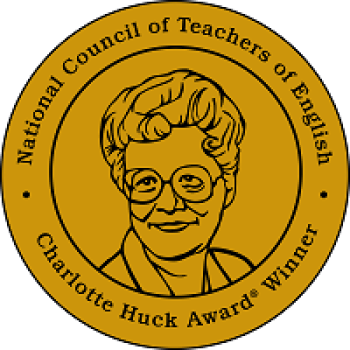
The NCTE Charlotte Huck Award® for Outstanding Fiction for Children honors the work of educator Charlotte Huck, who championed the classroom use of storybooks to teach reading and language arts. The award was established in 2014 to promote and recognize excellence in the writing of fiction for children that invites compassion, imagination, and wonder.
After sharing one or more of the winning, honored, or recommended titles as a classroom read-aloud, invite students write and illustrate their own story in which someone learned how to be more compassionate or to feel empathy for those who are different from themselves.
Allow students to decide to tell a story from their own lives or to create characters and imagined situations that would inspire others to be more compassionate. Share tools such as the Story Map and Cube Creator to help students plan and generate ideas. Arrange for a time for students to share their stories with classmates or with younger students.
This festival, hosted by the University of Redlands, brings together authors and illustrators of children’s literature with teachers, librarians, and families.
Charlotte Huck’s HarperCollins biography page includes a link to her book Princess Furball, illustrated by Anita Lobel.
NCTE’s page for its children’s book awards, also including the NCTE Orbis Pictus Award® for Outstanding Nonfiction for Children.
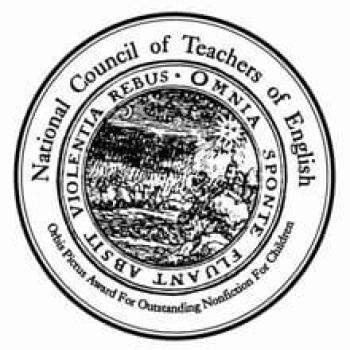
In 1990, NCTE established an annual award for promoting and recognizing excellence in the writing of nonfiction for children in grades K-8. The name Orbis Pictus commemorates the work of Johannes Amos Comenius, whose Orbis Pictus-The World in Pictures (1657) is considered to be the first children's picture book. One title is selected for the award each November at the Annual NCTE Convention, and as many as five Honor Books are also recognized.
Have your students conduct research and write original works of nonfiction on topics of their choice. Students may wish to work collaboratively on this project as coauthors or author-illustrator teams.
- First, have students brainstorm possible topics individually or in small groups.
- After each student or team has selected a topic, have them conduct research using appropriate Orbis Pictus Award-winners, Internet resources, and other reference sources.
- Have students plan and write informational picture books, biographies, or other works of nonfiction. You may wish to have students create a Flip Book to help them organize their information.
The National Council of Teachers of English provides information on the annual Orbis Pictus Award, including its history, selection criteria, and nomination procedures.
This sample chapter from the NCTE text The Best in Children's Nonfiction explores the elements that come into play as the committee chooses the winner.
This page, from the State Library of South Australia, offers information about Johannes Amos Comenius and his illustrated Latin primer for which the Orbis Pictus award is named. Additional links and an image from the book are also included.
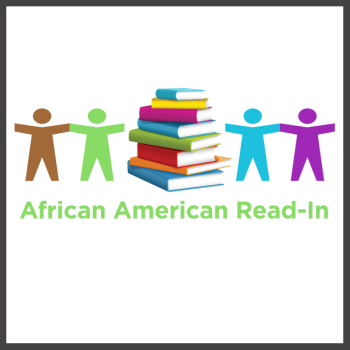
Celebrate Black History Month by taking part in the National African American Read-In. Sponsored by the Black Caucus of the National Council of Teachers of English (NCTE) and NCTE, and endorsed by the International Literacy Association, the goal is to document readers making the celebration of African American literacy a traditional part of Black History Month activities.
The African American Read-In will again be celebrated for the entire month of February, beginning February 1 and ending on February 28 (or 29).
Schools, churches, libraries, bookstores, community and professional organizations, and interested citizens can make literacy a significant part of Black History Month by hosting and coordinating community Read-Ins.
Hosting a Read-In can be as simple as bringing together family and friends to share a book or as elaborate as arranging public readings and media presentations that feature professional African American writers.
To be counted as a participant, simply:
- Select books authored by African Americans;
- Conduct your Read-In(s) on the days designated; and
- Report your results by submitting the African American Read-In Host Report Card.
This webpage from the National Council of Teachers of English is the official homepage for the African American Read-In. Included are details on the role of a host, how to submit the report card, background materials, and booklists for all ages.
Find a host of resources to get you started, but know that every event is truly unique!
This Library of Congress exhibit features documents that tell the story of the African American experience, from slavery to civil rights.
This National Geographic Kids website offers an extensive collection of articles, classroom resources, and reference materials related to African American culture and people.
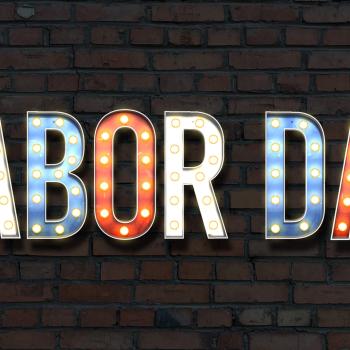
The first Labor Day was celebrated in New York City on September 5, 1882. It became an official federal holiday in 1894 and is now celebrated on the first Monday of September. Born out of the rise of unions as part of the American labor movement, the day is marked by parades, picnics, and other celebrations—and it marks the unofficial end of summer.
Students tend to know little more about Labor Day than it's a day off of work and school. Encourage them to learn more about the American labor movement by giving them time to research one of the figures from the list below. In paris or small groups, they can locate print and Web based resources about their lives and contributions to labor reform. Groups can use the Biocube Interactive to organize and share what they learn.
- Jane Addams
- Sarah Bagley
- César Chávez
- Samuel Gompers
- Dolores Huerta
- Mary Harris Jones
- John L. Lewis
- Lucy Randolph Mason
- Luisa Moreno
- Leonora O’Reilly
- Albert and Lucy Parsons
- Franics Perkins
- Esther Peterson
- A. Philip Randolph
- Walter Reuther
- Rosina Tucker
This page from the US Department of Labor explores the legislation behind Labor Day and the controversy over the identity of its originator.
The History Channel's section on Labor Day offers articles, videos, and speeches related to the holiday.
This Time Magazine article offers an accessible introduction to the history and significance of Labor Day.
The History Channel's section on the Labor Movement offers an overview of key figures in labor reform.
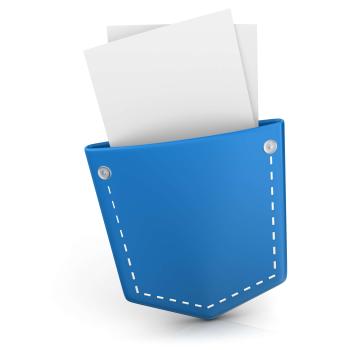
Share a poem with everyone you meet on Poem in Your Pocket Day. As part of New York City's celebration of National Poetry Month, residents have participated in Poem in Your Pocket Day since 2002. Now the movement has gone national! Select a poem or compose an original work and carry it with you in your pocket all day, sharing the poem and the fun of National Poetry Month wherever you go.
Use the ReadWriteThink Stapleless Book tool to help your students celebrate Poem in Your Pocket Day, sponsored by the Academy of American Poets.
- Print, copy, and distribute copies of the Stapleless Book Planning Sheet. Ask students to brainstorm what they would like to include in their books of poetry.
- Have younger students select a poem, and space the poem a line or two at a time across the pages. They can add illustrations after they have printed. Older students can select a collection of poems they enjoy to include in the book.
- Give students time to type their poem(s) into the Stapleless Book tool.
- Have students print and create their books. They will need scissors to complete this step.
- Encourage students to take their books of poetry with them throughout the day, sharing them with people they meet.
- If time permits, print and prepare multiple copies of their books and have students put them in unexpected places throughout the building!
Part of Poets.org (online home of the Academy of American Poets), the Poem in Your Pocket Day page features the history of the event and ideas for celebrating-including a list of poems about pockets!
Billy Collins, former US Poet Laureate, encourages students to take daily pleasure and inspiration from the collection of poems on this Library of Congress site. In addition to the 180 poems, Collins offers advice on reading poems aloud.
The Favorite Poem Project, cosponsored by Boston University and the Library of Congress, is dedicated to celebrating, documenting, and encouraging poetry's role in Americans' lives. Watch or listen to citizens read poems they love.
The Poetry Archive uses digital recordings of a diverse range of poems to help make poetry accessible, relevant, and enjoyable to a wide audience. The site features historic and contemporary recordings and offers resources for students, teachers, and librarians.
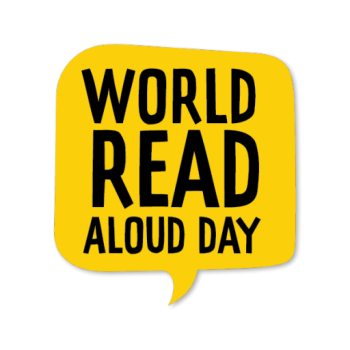
World Read Aloud Day motivates children, teens, and adults to celebrate the power of words. This global literacy movement is about taking action to show the world that the right to read and write belongs to all people. World Read Aloud Day asks everyone to celebrate the day by grabbing a book, finding an audience, and reading out loud.
Celebrate World Read Aloud Day by grabbing a favorite text and reading out loud. Have students bring in their favorite book, magazine, script, newspaper, etc. Ask each student to choose an excerpt to read to the class. Additionally, hold a classroom discussion about the power of literacy. Spread the power of reading by doing one of the following activities in the classroom:
- EDUCATE – Have several read alouds in the classroom throughout the day and talk together about the importance of global literacy, marking this as a special day of reading!
- ADVOCATE - Spread the word about World Read Aloud Day and the Global Literacy Movement within the school by hosting a school-wide read aloud event. Make posters in the classroom advertising and informing the school and community about the event. Construct bookmarks with information about the day and tips for reading aloud to their peers.
- INNOVATE - Share World Read Aloud Day by creating Public Service Announcements and share their projects using video chat, blogs, Glogster, and websites.
This website is for an organization that works to cultivate literacy leaders worldwide with teachers, parents, community members, and children to support the development of sustainable literacy practices across the world. This website provides information about World Read Aloud Day and an opportunity to share any activities using a blog or website.
This website is for a network of individuals and institutions committed to worldwide literacy. This site can be used for more information about literacy instruction and Global Literacy.
This website contains resources, information, and strategies for improving family literacy.
Meet your favorite authors, play games, enjoy read alouds, hear from educational experts and more!
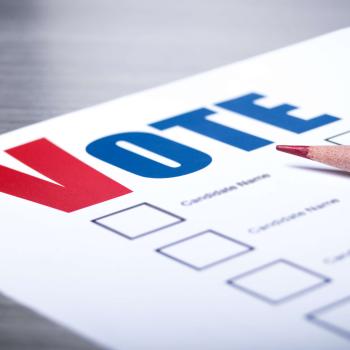
Election Day is held on the Tuesday after the first Monday in November. The first uniform Election Day was observed on November 4, 1845.
Have your students get involved with Election Day by creating posters to advertise Election Day and encourage registered voters to exercise their right to vote. Have small groups of students brainstorm lists of reasons why people should vote. Then, have them work in their groups to create posters using poster paper and paint or felt-tipped markers. Alternatively, they can use the ReadWriteThink Printing Press to create flyers. Students can also write persuasive essays that underscore the importance of getting out to vote or create a public service announcement or other multimedia persuasive piece. The ReadWriteThink lessons MyTube: Changing the World with Video Public Service Announcements and Students as Creators: Exploring Multimedia can be adapted for use with this activity.
This website, from the National Museum of American History, looks at the history of voting methods in the United States. The resource explores how ballots and voting systems have evolved over the years as a response to political, social, and technological change, transforming the ways in which Americans vote.
This resource, from PBS, introduces elementary-aged children to the importance of voting in a fun, interactive way.
This website, from the Library of Congress, focuses on some of the memorable elections since the first uniform Election Day on November 4, 1845.
This site includes a timeline of media coverage of important presidential races and presidencies.

The Summer Olympic Games, held every four years, are the largest sporting celebration in terms of the number of sports, the number of athletes present and the number of people from different nations gathered together at the same time in the same place. According to The Olympic Museum, the purpose of the Games is to create a “better world through sport practiced in a spirit of peace, excellence, friendship and respect.” In celebration of the world event students participate in a variety of activities centered on the 2024 Paris Games.
Write about the Olympic Games!
- Be a reporter and write about the result of an Olympic event or the Opening or Closing Ceremonies.
- Create onomatopoeic sports poems about the Summer Olympic events, draw illustrations, and compile their work in a flip book.
- Write and perform a speech after winning a gold medal.
- Create original poems about the Opening Ceremonies. Have students write down adjectives to describe what they see, hear, and feel during the Opening Ceremonies of the 2024 Summer Olympics. As a class compile the adjectives and create original poems about the ceremonies.
- Do some procedure writing; write about the rules of a specific event or create a new Olympic event.
Get creative with the Olympic Games!
- Design a stamp to commemorate the Paris 2024 Olympics.
- The Olympics are a great time to study the world. Use a variety of maps and flags to learn about the location and symbols of different countries. Imagine a new country has been formed – where would it be located? What would the flag look like?
Think critically about the Olympic Games!
- Use a Venn diagram to compare the ancient Olympic Games to the modern Olympic Games.
- The Olympic Phryge is the mascot for the 2024 Summer Olympics. Create your own mascot for the Olympic Games and write about why you created your mascot and what it represents.
Celebrate the peace surrounding the Olympic Games!
- The Olympic Truce is a valuable part of the Olympic Games that supports peace and sportsmanship. Learn more about the Olympic Truce and create a “Truce Wall” display. Have students post their meanings of peace, friendship, sportsmanship, as well as, pictures that the students have created that symbolize these themes.
- Nominate a Torchbearer. Being asked to be an Olympic Torchbearer is a high honor. Ask the students to work in groups and to each think of someone they know who they believe could be a worthy candidate to carry the Flame, and to write a short paragraph in which they give their reasons. Once this is completed, they fold over their paper and pass it on to the next person in the group. Repeat the process multiple times to create a list of worthy candidates to carry the Flame. Ask them to share their writing with the group and to identify any similar personal qualities and values shown by the nominees.
Have fun with the Olympic Games!
- Make and decorate cookies representing the Olympic Rings. Decorate each cookie with a different color frosting. Lay out the cookies on a plate in the pattern of the Olympic rings. Discuss why each ring is a different color and interlocked. Enjoy and Eat!
- Plan some games in your neighborhood that are like the Olympic Games. Create and hand out medals to those who win or participate.
This document gives and brief description, history, and meaning of the Olympic symbols.
This official website for the 2024 Summer Olympics contains information, schedules, news, photos, and video for the Summer Games.
This website provides a rich history of the Olympic games.
This document written by the Olympic Museum gives and brief description, history, and evolution of the Modern Olympic Games.